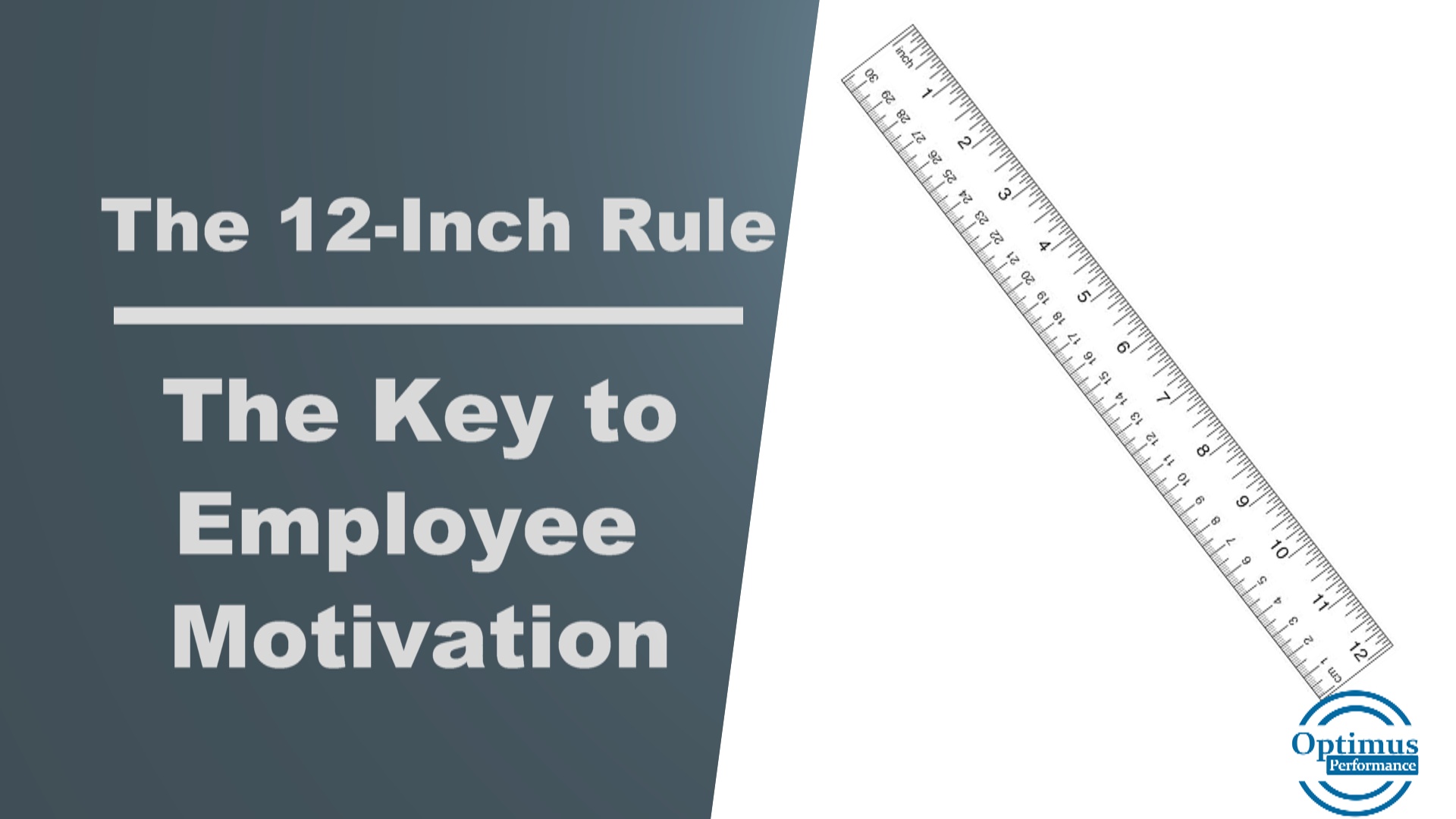Employee Motivation: The 12-Inch Rule
Every human being has certain needs that need to be met for them to feel motivated to perform at work. Of course, each person has their own degree of responsibility to feel motivated at work. It begins with their choice of job and employer.
Cause for De-Motivation
A thirty-year-old young man recently told me about an experience at a previous job that reminded me of the 12-inch rule. He was a sales person in a winery. He took visitors on grounds tours and served wine tastings. On one occasion the owner was present when the customer praised him. She found him knowledgeable and helpful. Rather than praising the salesperson and thanking the customer, the boss said that he wished his other more experienced salesperson was on duty. That salesperson was more knowledgeable he thought. It’s like he was saying, oh that’s nothing, you should have met so and so.
The boss completely ignored the opportunity to acknowledge the compliment of the client and recognize the impression the young salesperson had made. This caused the salesperson, who was also the top seller to instantly feel de-motivated and unappreciated.
The 12-Inch Rule

There is about 12 inches between a pat on the back and a slap on the behind. We all know what a slap on the behind feels like. A pat on the back feels good, especially when it is given with sincerity and done when the action is performed that warrants the recognition. Think of an applause for a great performance by an athlete or musician. The instant feedback from the audience fuels the emotions and sparks a motivation to repeat the performance and do even better.
Positive Feedback and Recognition
Employee motivation is quite simple, if you can remember to apply the 12-inch rule. You should be able to pat someone on the back more often then you slap their behind. The problem is that many managers tend to slap the behind more often than they give praise. Perhaps new employees need an equal or greater number of slaps, but this should be done in the context of training and coaching.
To really maximize this concept, it is best to link the praise and recognition to results. When employees are clear on what performance is required to produce specific results and you recognize their behaviour then you not only motivate them, but you increase their confidence and self-esteem. This is one of the most powerful ways to motivate employees.
The young man I was dining with went on to say that his impression was that most bosses think that good pay is the motivation. But to him that was just a way to meet his needs. If he wasn’t being recognized for his contribution to the business then he became more and more disinterested in performing well on the job.
Keep the 12-inch rule front of mind and look for opportunities to pat your employees on the back when they do well.
